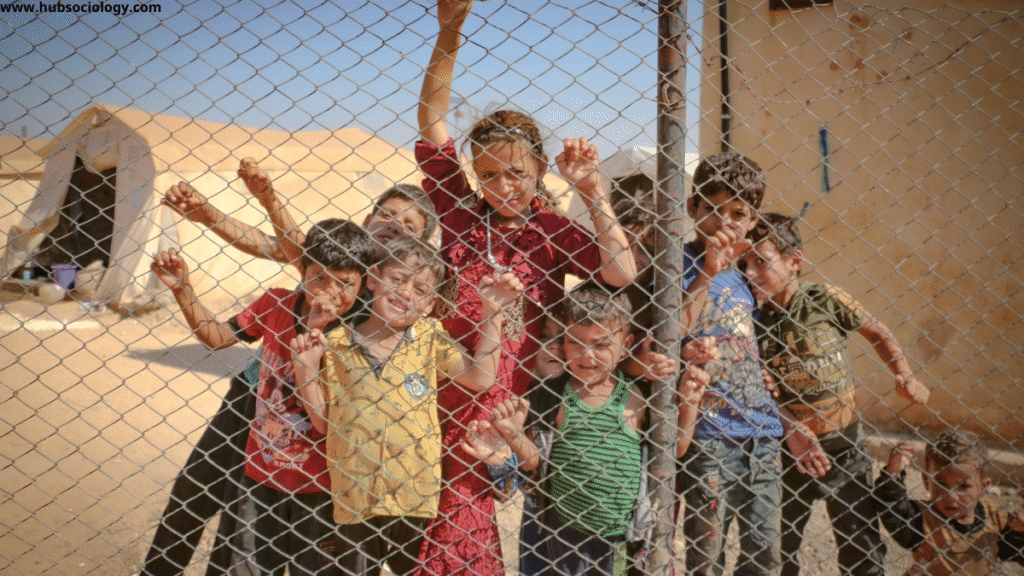Introduction
Sociology, as a discipline, studies society, social structures, and human relationships, while demography primarily concerns itself with the statistical study of population—its size, structure, distribution, and changes over time. When the two fields intersect, we arrive at social demography, which focuses on understanding population dynamics within the broader framework of social, cultural, political, and economic contexts. Unlike pure demography, which relies heavily on quantitative methods and statistical data, social demography seeks to interpret the social processes, institutions, and behaviors that influence and are influenced by demographic patterns.
Social demography has gained increasing importance in recent decades due to globalization, urbanization, migration, and pressing issues like declining fertility in some regions and rapid population growth in others. By linking social theory and demographic analysis, it provides a comprehensive perspective on how populations evolve and how social factors shape these changes.

Meaning of Social Demography
Demography, derived from the Greek words demos (people) and grapho (to write), is the scientific study of human population. Social demography extends this definition by embedding demographic processes within a sociological framework. It studies population not merely as numerical aggregates but as socially embedded phenomena.
For example, marriage and fertility are not just biological or numerical processes but are influenced by cultural norms, religious practices, gender roles, economic conditions, and government policies. Similarly, migration patterns are shaped by social networks, ethnic ties, and political conflicts, not just by economic opportunities. Thus, social demography provides a holistic understanding of population by integrating social dimensions with demographic trends.
Nature of Social Demography
The nature of social demography can be understood through the following dimensions:
- Interdisciplinary Character
Social demography lies at the intersection of sociology, economics, political science, geography, and anthropology. It borrows tools from statistics and mathematics while applying sociological theories to explain the social implications of demographic processes. - Empirical and Analytical
Social demography is grounded in empirical data such as census reports, surveys, and vital registration systems. At the same time, it is analytical, interpreting data through social theories and frameworks to explain population behavior and consequences. - Macro and Micro Perspectives
It operates at both macro and micro levels. On the macro scale, it examines broad patterns such as urbanization, aging populations, and fertility decline. On the micro scale, it explores how family structures, cultural practices, and individual behaviors shape demographic trends. - Dynamic in Nature
Population is never static; it continuously changes due to births, deaths, and migrations. Social demography, therefore, is dynamic and studies these transformations in relation to social change and modernization. - Policy-Relevant
Social demography is closely tied to policy-making. Governments depend on demographic analyses to frame policies on healthcare, education, employment, housing, and social welfare. Thus, its applied nature makes it crucial for social planning. - Concerned with Inequality
A key feature of social demography is its focus on how demographic processes vary across different social groups—such as class, caste, gender, ethnicity, and religion. It highlights the inequalities that arise in demographic outcomes, for example, differences in life expectancy or fertility rates among rich and poor communities.
Scope of Social Demography
The scope of social demography is vast, covering a wide range of themes and processes. Its major areas include:

1. Population Size and Growth
Social demography examines how populations grow or decline over time, exploring the causes and consequences of population change. It considers questions like:
- What are the effects of rapid population growth on resources and employment?
- How does population decline affect aging societies and their economies?
2. Fertility and Reproductive Behavior
Fertility is not only a biological phenomenon but also a deeply social one. Social demography studies how cultural norms, religious beliefs, economic pressures, and state policies (such as family planning programs) shape fertility patterns. For instance, the preference for male children in some societies influences reproductive decisions.
3. Mortality and Health
Mortality rates reflect not only medical conditions but also social determinants such as poverty, malnutrition, sanitation, and access to healthcare. Social demography examines how these factors create disparities in life expectancy and child survival rates across social groups.
4. Migration and Mobility
Migration—whether rural-to-urban, international, or forced displacement—has major social consequences. Social demography explores the causes of migration, such as economic opportunities, wars, or environmental crises, and its impacts on both origin and destination regions. It also examines how migrants maintain social ties and networks.
5. Population Distribution and Urbanization
The uneven distribution of population across regions affects development, resource allocation, and governance. Social demography studies patterns of urbanization, rural depopulation, and the growth of megacities, linking them to industrialization, modernization, and globalization.
6. Population Composition
Social demography analyzes the structure of populations in terms of age, sex, ethnicity, occupation, education, and marital status. This helps understand social challenges such as the rising burden of old-age care, the gender imbalance due to sex-selective practices, or the implications of a young population on employment and education systems.
7. Family and Household Structure
Demographic processes are deeply connected to family systems. Social demography studies how marriage patterns, kinship structures, divorce rates, and changing gender roles affect population trends.
8. Social Change and Modernization
As societies modernize, demographic behaviors shift—for example, declining fertility, delayed marriages, and nuclear families replacing extended ones. Social demography interprets these changes in light of social transformation.
9. Population Policy and Planning
One of the applied areas of social demography is its contribution to policy-making. Demographic analysis informs policies related to family planning, education, health care, labor markets, and social security. For example, India’s National Population Policy or China’s former one-child policy both stem from demographic considerations.
10. Environment and Sustainable Development
With growing concern over climate change, social demography now explores how population growth and migration affect the environment and how ecological crises, in turn, shape population movements and health.

Importance of Social Demography in Sociology
- Understanding Society through Population – Population trends influence every aspect of society, from economic development to cultural practices.
- Explaining Social Problems – Issues like unemployment, housing shortages, poverty, and illiteracy can be better understood through demographic analysis.
- Linking Micro and Macro Realities – It bridges individual behavior (like fertility choices) with macro phenomena (like population growth).
- Guiding Social Policy – Governments, NGOs, and international agencies rely on social demography for planning welfare programs.
- Comparative Studies – It allows sociologists to compare demographic patterns across societies and understand global diversity.
Challenges in Social Demography
- Data Limitations: Inaccurate census or survey data can mislead analysis.
- Complex Interactions: Population processes are influenced by multiple overlapping factors (economic, cultural, political).
- Ethical Issues: Population policies sometimes raise ethical concerns, such as coercive sterilization programs.
- Global Inequalities: Vast differences between developed and developing nations complicate the generalization of demographic theories.
Conclusion
Social demography is a vital subfield of sociology that connects population studies with social theory. By moving beyond numbers and examining the social contexts of demographic processes, it enriches our understanding of society. Its scope ranges from fertility, mortality, and migration to family structures, urbanization, and environmental challenges. In an era of rapid social change and global interdependence, social demography provides essential insights for both academic understanding and practical policymaking.
Ultimately, social demography reminds us that population is not just a matter of statistics; it is a reflection of human behavior, cultural values, and social structures. It is through this lens that sociology and demography together contribute to a deeper comprehension of human society.
Do you like this this Article ? You Can follow as on :-
Facebook – https://www.facebook.com/hubsociology
Whatsapp Channel – https://whatsapp.com/channel/0029Vb6D8vGKWEKpJpu5QP0O
Gmail – hubsociology@gmail.com
Exam-Style Questions
5 Marks Questions
- Define social demography and differentiate it from pure demography.
- Write two features of the nature of social-demography.
- How does social demography view fertility as a social process?
- Mention two challenges faced in the study of social-demography.
- What is the significance of population composition in social-demography?
10 Marks Questions
- Discuss the interdisciplinary nature of social-demography.
- Explain the role of migration in shaping population dynamics from a sociological perspective.
- “Mortality is not just a biological process but a social phenomenon.” Discuss.
- Examine the relationship between family structures and demographic behavior.
- Evaluate the importance of social-demography in social policy and planning.
15 Marks Questions
- Critically examine the nature and scope of social-demography in the discipline of sociology.
- How do social, cultural, and economic factors influence fertility, mortality, and migration? Illustrate with examples.
- Analyze the role of social-demography in understanding contemporary global issues such as aging, urbanization, and environmental change.
- “Social-demography bridges the gap between statistics and society.” Discuss with reference to its methods and applications.
- Evaluate the challenges of social-demography in the 21st century with special reference to developing countries.

1 thought on “Social Demography: Nature and Scope”